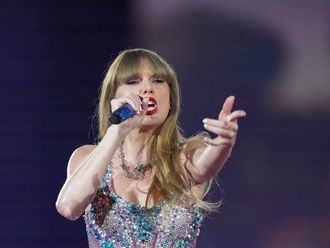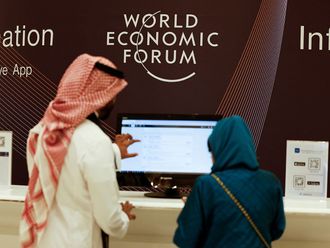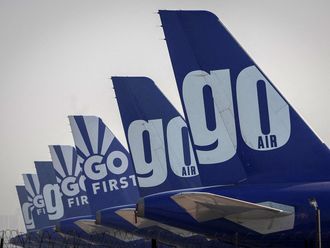It’s often said that the most important qualities in a chief executive are character and judgement.
So what are shareholders, directors, customers and the public to make of the Barclays chief executive, James E. Staley, the subject of shareholder protests and multiple investigations on both sides of the Atlantic after little more than a year in the executive suite?
Everyone I spoke to describe Staley, a 34-year investment banking veteran of J.P. Morgan, as warm, likeable and much appreciated for bringing some vitality to Barclays. The bank is desperate for stability after years of executive turmoil, the board’s ouster of its previous two chief executives, the Libor interest-rate manipulation scandal, and continuing fallout from the financial crisis.
And then, in the next breath, nearly everyone mentioned the same word: “judgment”. That’s a quality that’s central to the issues that have enveloped Staley, which include a campaign to unmask a whistle-blower that Staley publicly acknowledged was a “mistake”.
“I have apologised to the board, and I would today like to apologise to you as well, for that error,” Staley said at Barclays’ annual shareholders meeting in Royal Festival Hall in London.
He hasn’t apologised for the other issue roiling his tenure, his reported intervention in a dispute over a Brazilian private-equity deal that pitted his brother-in-law against the influential private-equity firm KKR, a major Barclays client.
According to “The Wall Street Journal”, KKR executives are so angry that they are withholding some business from the bank. “Both of these things are judgement issues,” said Charles M. Elson, a professor and director of the John L. Weinberg Center for Corporate Governance at the University of Delaware.
“In and of themselves, they may seem relatively small given the overall operations of a global bank, but they call into question his judgement and character, and that’s important.”
In both instances, Staley seems to have reacted viscerally — to protect a friend and ally at the bank, in the whistle-blowing incident, and a relative, in the private-equity deal. Such behaviour might not have attracted much public attention even if Staley were still leading a division of a large bank.
But when you are a chief executive, “your behaviour is under the microscope,” Elson said. “Everything you do will be questioned. You’re in a very different position from others in the organisation.”
That Staley would be perceived as seeking twice to expose a whistle-blower — after other Barclays officials blocked his first attempt — is especially troubling given that Barclays has made protecting whistle-blowers a centrepiece of its post-financial-crisis culture and identity.
“It sends a terrible message,” Elson said.
Mike Ashley, a Barclays director and chairman of the audit committee, described himself as a “whistle-blowing champion” in Barclays’ 2016 annual report and promised “an annual report to the board on whistle-blowing matters.” Barclays handed out coffee mugs emblazoned with the hotline number and the logo of a whistle.
The bank’s code of conduct, “The Barclays Way”, assures whistle-blowers that “no one will be treated less favourably or discriminated against because they have raised a concern.” Yet when two anonymous letters arrived alleging that Tim Main, whom Staley hired as head of the Barclays Financial institutions group in June, had a history of personal issues that affected his work, Staley was troubled and instructed Barclays’ internal security division to identify the source.
Staley thought the letters were malicious, because Main’s issues were in the distant past, he had successfully surmounted them and he had maintained an unblemished record since then, according to a bank employee familiar with the matter.
Barclays hasn’t said who gave Staley the letters — in itself a breach of internal protocol — or who at the bank subsequently stopped the inquiry. That might have been the end of it. But a month later, after the bank closed its inquiry into Main and determined that no action was warranted, Staley again asked internal security to find the source of the letters.
This time Barclays went so far as to enlist the US Postal Service to help identify the source of the letter, because the letters bore a US postmark. Of this second attempt, Barclays has said Staley had an “honestly held, but mistaken, belief that he had clearance to identify the author of one of the letters.”
The pursuit of the whistle-blower came to light thanks to yet another whistle-blower, who reported that Staley was violating bank policy. The mystery of who sent the two letters remains unsolved.
The board hired an outside law firm to investigate the handling of the whistle-blower episode and reported the results to regulators. Britain’s Financial Conduct Authority and New York’s Department of Financial Services are investigating, as is the US Justice Department.
In the private-equity deal, KKR initially asked Staley to help resolve a dispute it had with Staley’s wife, Debora Nitzan Staley, and her brother, Jorge Nitzan, members of a wealthy Brazilian family. The Nitzans had sold KKR a Brazilian company they owned with another private-equity concern.
After the deal closed, KKR executives discovered evidence of what they considered fraud and contacted Staley about helping to settle the dispute. Instead, KKR claimed that Staley had gone to bat for his brother-in-law, defending him and contacting other investors in an effort to help his brother-in-law buy back the company.
KKR has filed an arbitration claim against Staley’s brother-in-law, and has withheld business from Barclays, where it has been a significant client, accounting for hundreds of millions in fees.
Kristi Huller, a spokeswoman for KKR, said, “We have a responsibility to protect the interests of our investors who we believe were defrauded.” She added, “We would also note that we have been a longtime client of Barclays, which comes with its own responsibilities for Barclays.”
Barclays has said that it had no involvement in the deal, that Staley was acting in a personal capacity and that he kept senior Barclays management informed. Barclays’ chairman, John McFarlane, told reporters that the board had advised Staley not to do anything, and that he had complied.
But it’s very difficult for any chief executive to act in a purely personal capacity, especially in business matters involving bank clients. Why Staley would have had any involvement in a deal so sensitive to a Barclays client mystifies some.
“Promoting the work of a relative is especially ill advised,” Elson said. “That also raises judgement questions.”
Staley also seems not to have absorbed a central paradox of being chief executive, which is that the more power you have, the more restrained you need to be about using it. Jeffrey Pfeffer, professor of organisational behaviour at Stanford’s Graduate School of Business, said, “CEOs frequently suffer from the disinhibition that comes from having power.”
Barclays’ board has discussed the whistle-blower issue at length and has said Staley has the board’s full confidence, although it intends to reduce his bonus by a “very significant” amount. (Last year it was $1.6 million.)
Still, it doesn’t seem to be taking matters all that seriously: At the shareholders’ meeting, McFarlane compared the whistle-blower matter to running a red light.
“He thought he had a green light,” McFarlane said of Staley. “He went through the green light, and it was actually red. The action for going through a red light wrongly is you don’t lose your license.”
McFarlane also pointed to Staley’s relative inexperience as a chief executive and insisted he had “learnt his lesson.” But Pfeffer of Stanford observed, “Boards mostly do not provide tough oversight of their CEOs.”
For now, Staley’s job seems secure, although it’s clear he has little margin for further error. Institutional Shareholder Services had advised shareholders to abstain and withhold their support for Staley’s re-election to the board, and many did: He received just 62 per cent of potential votes.
But those who did vote gave him the benefit of the doubt: 97 per cent voted for him.
— New York Times News Service












